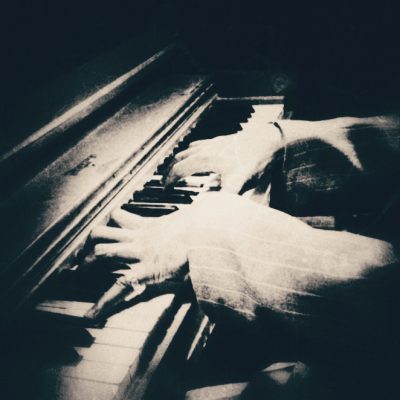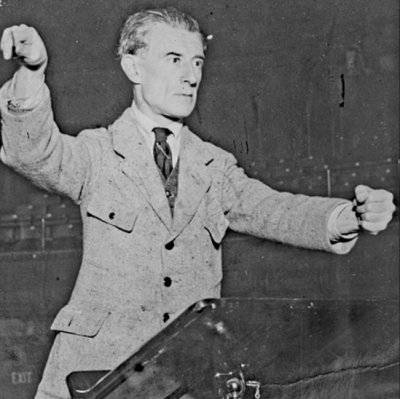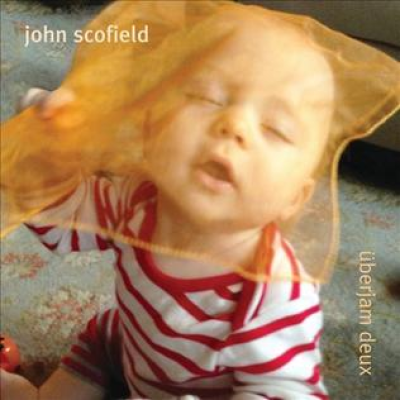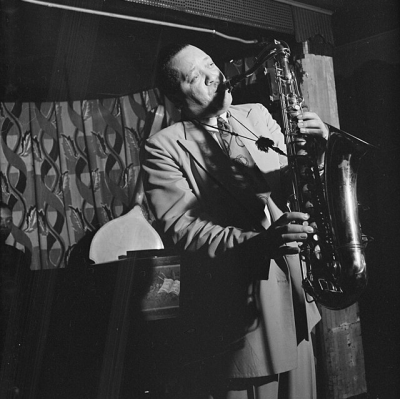.
.
New Short Fiction Award
We value creative writing and wish to encourage writers of short fiction to pursue their goal of being published. Jerry Jazz Musician would like to provide another step in the career of an aspiring writer. Three times a year, we award a writer who submits, in our opinion, the best original, previously unpublished work.
Joanne Seiff of Bowling Green, Kentucky is the fifteenth recipient of the Jerry Jazz Musician New Short Fiction Award, announced and published for the first time on July 15, 2007.
.
.
Joanne Seiff (with Harry)
.
*
.
Joanne Seiff is a writer and knitwear designer. Her forthcoming non-fiction book, Fiber Gathering, is about fiber festivals and the rich fiber arts community in the United States. Her writing appears in a variety of newsstand publications. She’s proud to be the recipient of a Kentucky Foundation for Women grant and the Kentucky Art Council’s 2007 Al Smith Individual Artist Fellowship for her non-fiction.
The Jerry Jazz Musician Short Fiction Contest gave Joanne an excuse to visit the world of her imagination and write about it every few months. She’s very grateful to the contest for this opportunity.
When Joanne’s not working, she’s often walking Harry and Sally (her bird dogs). Her hobbies are fuel for her writing: spinning, knitting, gardening, cooking, and spending time outdoors with her absent-minded biology professor husband, who studies butterfly genetics.
Read more about her work at her Yarn Spinner.
.
___
.
.
The Prayer For Swift and University
by
Joanne Seiff
.
_________
.
….. Stories burst out of her as a magician’s trick pulls out scarves; multi-colored patterns, solids and conservative checks spilled out of her mouth and hands when she least expected it. In the end, of course, she recognized it as it was. These were the stories of all our lives, every human soul’s experience could produce that knotted, impossibly long scarf string that sprung out of the local magician.
….. Yet, most people did not have a new story to tell very often at all. At first, this was a wonder to her — why did all the interesting things happen only to her? But of course, this was self-centered, she realized. These things do happen to all of us on this earth. It was just that few people noticed the stories as they blossomed. It’s in the observation of it, she discovered, that one finds a good story.
….. Watching, waiting, even expecting intrigue and anxiety in one’s daily life was the best way to capture a story. Like mice, they hide when you’re trying to catch them, and run rampant havoc through our dreams. When night falls, the moldings of old houses become their race tracks, and our day’s stories are their Grand Prix. Our unconscious risks and bucks, bets like the mice bookies, making millions of seed bets on the lack of observation skills in our waking souls.
….. It was a heavy, humid day when the puppy died. She said goodbye to her husband as he headed out the door on his drive to work. She settled down to her studies, alone as usual. Only moments passed before the phone rang and her husband called from a passerby’s cell phone.…..
….. “At the corner of Swift Avenue and University Drive,” he said. “A small, reddish brown chow puppy ran by.” He started to pull over to the side of the road to reach the puppy, but it was too late. The puppy darted across the intersection (and it was a bad intersection anyway). A bus turned the corner and ran over the puppy.
….. He rushed the puppy to the vet, cradling it in an army blanket and towel in an old wooden box he’d kept in his car trunk. She called the vet’s office to warn them of the emergency. She rushed to meet him. The weather was drizzly and humid.
….. The puppy was in to the vet’s surgery, but it was too late. It died, its pelvis crushed. The doctor charged nothing. The couple carried bloodstained blanket and towel home. The bus driver called, weeping. He offered to pay all the (nonexistent) expenses and thanked them. His own dog had been run over once.
….. No way to proceed on such a day, even though everyone had been compassionate. She arrived completely unprepared at her afternoon seminar on Western Religious Tradition, but newly versed in mortality. That corner of Swift and University became a personal memorial, a perpetual moment, as she turned the car into silence.
….. That kind vet? He died the same year, hit by a drunk driver at a difficult intersection, on a curvy road. Remembering his compassion, they longed to tell the family something — but could not. How to tell a family with young children who’d just lost their father about a lost puppy, run over, and the vet’s professional compassion? The parallels ached, and were too jarring to repeat.
….. Turning through the intersection, they’d turn to one another. “This is in memory of a fifteen pound chow puppy that almost became our own,” they’d say to each other. It was a wordless message, a look into each other’s eyes as the driver glanced both ways, and each saw that the glance, brief as it was, slid towards the other, and landed on the spot in the road. This, left unsaid, was in memory of a kind and gentle vet.
….. The story was just another day, another moment frozen into memory. It could pass easily into oblivion without recording, without observation. Yet the scarves unfurled. She saw the mice rushing the moldings, lining up for a derby in her mind each night. The unconscious couldn’t forget. The drizzle, the damp humid clinging of her dress. A bloody army blanket scratchy against her skin.
….. Is a sad story a good story? Can a poignant loss become strong narrative? She turned the ideas over and over, making the edges smooth and rounded with time. Did it still cause a key-like turning in her gut? It still caused her to cry unexpectedly at times, when she touched a dog’s fur. In a society wrapped up in happy endings, is it possible to draw attention with one tale that ended, even on frequent reflection, without a tail? She took long walks with her own dog, wondering about what had happened. Was a secret moral lurking, just beyond grasp, in the gravel of a nearby unpaved road?
….. The rabbi of their congregation, just a mile or two beyond the dreaded intersection, offered adult education classes on blessings.
….. “For everything,” he taught, “there’s a prayer. The Talmud teaches us myriad formulae to pray, at every occasion. Here’s one prayer for seeing a rainbow. Here’s another for meeting a head of state, a president or a queen.” The room buzzed with interest as everyone strove to find their own particular blessings and prayers. The class closed with a modern poem, a sweet prayer for eating a peach.
….. The couple was quiet as they left the synagogue, slow to talk about the prayers they’d missed out on saying, the opportunities long gone. In the car, they wondered, was each prayer a way to observe any moment when things should be remembered? In what way could they remember everything, the sad experience as well as the happy one, the event and the ritualized prayer to describe and bless it? The car jittered onto the gravel, and turned into that bad intersection, the one they couldn’t forget.
….. Each added a new silent prayer to their vocabulary, a terrible story to remind them to utter the prayer for the corner of University and Swift. May the one above, (brake, look both ways, turn the wheel) treat that vet with mercy, the way he treated one very small puppy.
.
_______
.
.
.
.
.










































